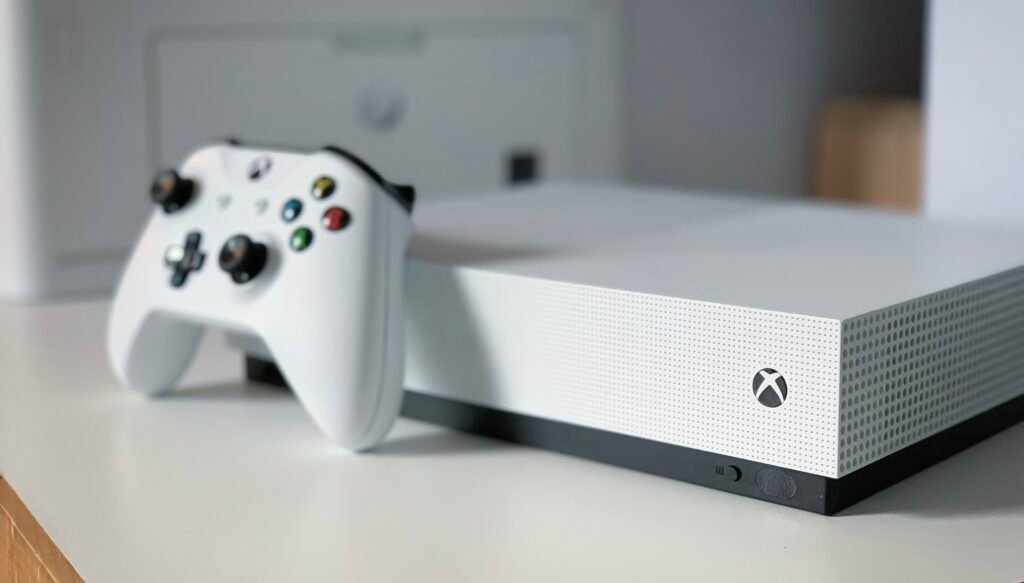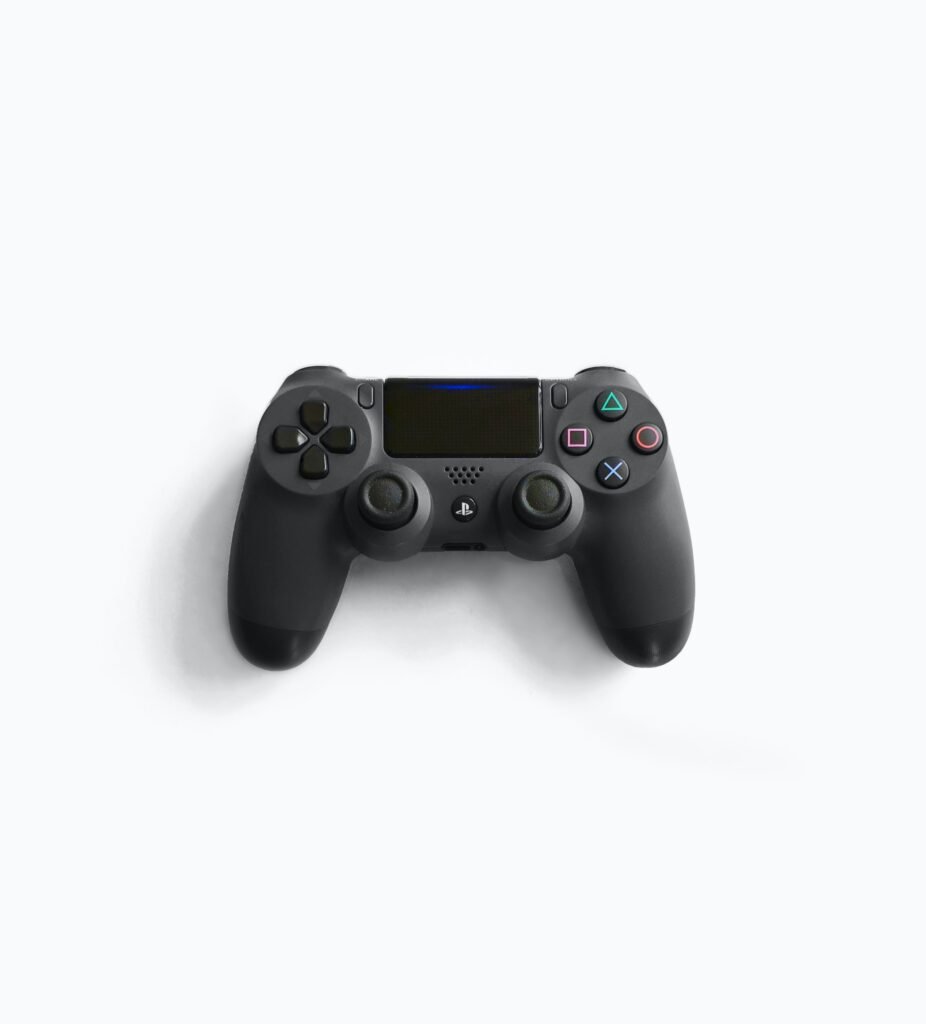Sure, in this article, we’ll explore the possibility of using a gaming console as a media center to stream your favorite TV shows and movies. We’ll discuss the benefits of doing so, such as having all your entertainment in one place and the convenience it offers. Additionally, we’ll provide a step-by-step guide on how to set up your gaming console as a media center and share some tips and recommendations. So, let’s dive in and find out how to turn your gaming console into a versatile streaming device.
Introduction
In today’s digital age, streaming services have become increasingly popular for entertainment purposes. With a vast array of content available at our fingertips, it’s not surprising that many people are looking for convenient ways to access these services from the comfort of their own homes. One such option is using a gaming console as a media center for streaming services. In this article, we will explore the possibilities and benefits of using a gaming console for streaming, as well as provide a guide on setting up and optimizing your console to enhance your media center experience.
What is a gaming console?
Before we delve into the world of using gaming consoles as media centers, let’s start with a brief explanation of what a gaming console actually is. A gaming console is a specialized computer system designed primarily for playing video games. It typically consists of a central processing unit (CPU), a graphics processing unit (GPU), memory, storage, and various input and output devices such as controllers and audio/video connectors.
Definition of a gaming console
A gaming console is a dedicated gaming device that allows users to play video games on their television screens. It is designed specifically for gaming purposes and often comes with its own proprietary software, operating system, and online gaming services.
Main features of gaming consoles
Apart from providing a platform for gaming, gaming consoles come with a range of features that make them suitable for use as media centers. These features typically include the ability to connect to the internet, access streaming services, play multimedia files, and even act as DVD or Blu-ray players. Additionally, gaming consoles often have powerful hardware capable of delivering high-quality audio and video output.

Using a gaming console as a media center
Now that we understand the basics of gaming consoles, let’s explore the benefits of using them as media centers for streaming services.
Benefits of using a gaming console for streaming services
One of the primary benefits of using a gaming console as a media center is convenience. Gaming consoles are generally designed to be user-friendly and provide a seamless streaming experience. They often have dedicated buttons or shortcuts to launch streaming apps, making it quick and easy to access your favorite content.
Another advantage is the wide range of streaming services available on gaming consoles. Major platforms like Netflix, Amazon Prime Video, Hulu, and Disney+ are all compatible with gaming consoles, ensuring that you have access to a vast library of movies, TV shows, and original content. By using a gaming console, you can consolidate all your streaming subscriptions in one place, simplifying your entertainment setup.
Compatibility with streaming platforms
Gaming consoles are typically compatible with multiple streaming platforms, ensuring that you have access to a diverse selection of content. Whether you prefer Netflix for movies and TV shows, Spotify for music streaming, or Twitch for live streaming and gaming content, chances are you can find an app or service that suits your preferences on your gaming console.
Additionally, gaming consoles often receive regular updates to ensure compatibility with the latest streaming services. This means that you won’t have to worry about missing out on new content or features, as your console will be equipped to handle them.
Setting up a gaming console as a media center
Now that we understand the benefits of using a gaming console as a media center, let’s discuss how to set up your console for streaming services.
Connecting the console to the TV
The first step in setting up your gaming console as a media center is connecting it to your TV. Most consoles utilize an HDMI cable to transmit audio and video signals to the TV, so ensure that you have an available HDMI port on your TV. Simply plug one end of the HDMI cable into the console’s HDMI output port and the other end into an HDMI input port on your TV.
Once the console is connected to the TV, you may need to change the input source on your TV to the corresponding HDMI input port. This can usually be done using the TV’s remote control or menu settings. Once the correct input source is selected, you should be able to see the console’s user interface on your TV screen.
Configuring network settings
To access streaming services on your gaming console, you will need to connect it to the internet. Most consoles have built-in Wi-Fi capabilities, allowing you to connect wirelessly to your home network. To set up a wireless connection, navigate to the network settings menu on your console and select the option to connect to a Wi-Fi network. Follow the on-screen instructions to enter your network’s SSID (Wi-Fi name) and password.
If you prefer a wired connection for increased stability and speed, you can connect an Ethernet cable from your console to your router or modem. Simply plug one end of the Ethernet cable into the console’s Ethernet port and the other end into an available Ethernet port on your router or modem.
Downloading and installing streaming apps
Once your console is connected to the internet, you can begin installing streaming apps. Most gaming consoles have an integrated app store where you can browse and download various apps. Simply navigate to the app store on your console, search for the desired streaming app, and select the option to download and install it.
Popular streaming apps such as Netflix, Hulu, and Amazon Prime Video are generally readily available on gaming consoles. However, it’s always a good idea to check the app store to ensure that your preferred streaming apps are compatible with your console.

Navigating streaming services on a gaming console
After setting up your console and installing your preferred streaming apps, you’re ready to dive into the world of streaming services. Here’s a guide on how to navigate and make the most of your media center experience.
Accessing and browsing streaming apps
To access your streaming apps, simply navigate to the home screen or dashboard of your gaming console. From there, you should see icons or shortcuts for your installed apps. Depending on your console’s user interface, you may be able to rearrange or customize the layout of these icons to suit your preferences.
Once you’ve launched a streaming app, you will typically be greeted with a home screen that showcases featured content or personalized recommendations. Use the controller or remote for your console to navigate through the app’s interface and access the various sections, such as genres, trending content, or search functionality.
Exploring content libraries
One of the key advantages of using a gaming console as a media center is the vast content libraries available through streaming services. Whether you’re a fan of movies, TV shows, documentaries, or even live events, you’re likely to find a wide variety of options to choose from.
Take advantage of the search functionality offered by streaming apps to find specific titles, actors, or genres. Many apps also provide curated collections or personalized recommendations based on your viewing history and preferences. A gaming console gives you the ability to explore and discover new content, making your streaming experience more enjoyable and diverse.
Creating user profiles
Most streaming apps allow you to create individual user profiles, which can be particularly useful if multiple people share the same console. These profiles allow each user to have their own personalized recommendations, viewing history, and watch lists. Not only does this help avoid mix-ups in content preferences, but it also ensures that each user’s streaming experience is tailored to their own tastes.
Creating user profiles is usually a straightforward process within the streaming app’s settings menu. Simply follow the prompts to set up a new profile or select an existing profile if one has already been created.
Enhancing the media center experience
Now that you’re familiar with navigating streaming services on your gaming console, let’s explore some ways to enhance your media center experience.
Using additional accessories
Gaming consoles often support a wide range of additional accessories that can enhance your media center experience. For example, a wireless keyboard or media remote can provide a more convenient and intuitive way to navigate through your streaming apps. These accessories typically connect to your console via Bluetooth or a USB receiver.
Another popular accessory is a gaming headset, which can provide immersive audio for both gaming and streaming. Whether you prefer to enjoy movies with surround sound or immerse yourself in the virtual worlds of video games, a gaming headset can greatly enhance your overall experience.
Optimizing audio and video settings
Most gaming consoles offer a variety of audio and video settings that can be adjusted to suit your preferences. These settings can help improve the quality of your streaming experience by optimizing audio clarity, video resolution, and color accuracy.
To access these settings, navigate to the console’s system settings or options menu. From there, you should be able to adjust various audio and video parameters such as resolution, aspect ratio, brightness, contrast, and audio output.
Experiment with different settings to find the combination that produces the best audio and video quality for your specific setup and preferences. Keep in mind that the optimal settings may vary depending on factors such as your TV’s capabilities and the available internet bandwidth.

Differences between using a gaming console and a dedicated media center
While using a gaming console as a media center for streaming services offers numerous benefits, it’s important to consider the differences between this setup and a dedicated media center.
Pros and cons
One of the main advantages of using a gaming console as a media center is cost-effectiveness. If you already own a gaming console, you can leverage its capabilities without investing in additional hardware. Additionally, gaming consoles often receive regular updates and support from their manufacturers, ensuring ongoing compatibility with the latest streaming services.
However, there are a few potential downsides to using a gaming console as a media center. Gaming consoles are primarily designed for gaming, so their user interfaces and functionalities may not be as intuitive or streamlined as dedicated media center devices. Additionally, some gaming consoles may lack certain features commonly found in dedicated media centers, such as built-in storage for downloading and storing media files.
Cost comparison
If you don’t already own a gaming console, it might be worth considering the overall cost of setting up a console as a media center compared to purchasing a dedicated media center device. While gaming consoles can be expensive upfront, they often offer a wide range of functionalities beyond media streaming, making them a versatile entertainment investment.
On the other hand, dedicated media center devices may offer a more focused and seamless streaming experience. These devices are purpose-built for media consumption, typically come with user-friendly interfaces, and may have additional features such as DVR capabilities or expanded storage options. However, they may also come with a higher price tag than a gaming console alone.
Ultimately, the decision between using a gaming console or a dedicated media center device for streaming services depends on your specific needs, budget, and preferences.
Troubleshooting common issues
As with any electronic device, gaming consoles can encounter occasional issues when used as media centers for streaming services. Here are a few common problems you may encounter and some troubleshooting tips.
Slow streaming or buffering
One of the most frustrating issues when streaming media is slow loading times or buffering. This can be caused by various factors, including a slow internet connection or high network congestion.
To troubleshoot slow streaming or buffering issues, you can try the following steps:
- Check your internet connection speed using a speed test website or app. If the speed is significantly lower than your broadband plan, you may need to contact your internet service provider to resolve the issue.
- Move your gaming console closer to your router to improve Wi-Fi signal strength, or consider using a wired Ethernet connection for a more stable connection.
- Restart your gaming console, router, and modem to refresh the device’s network settings.
- Close any background applications or games running on your console that may be consuming network bandwidth.
- Pause or reduce the quality of the streaming content to lessen the strain on your internet connection.
Audio or video synchronization problems
Occasionally, you may encounter audio or video synchronization issues when streaming content on your gaming console. This can result in audio being out of sync with the video, leading to an unpleasant viewing experience.
To address audio or video synchronization problems, you can try the following troubleshooting steps:
- Restart your gaming console and the streaming app to refresh their settings.
- Check for any available updates for both your console’s firmware and the streaming app. Updating to the latest software versions can often resolve compatibility issues.
- Adjust the audio and video settings on your console. Some games and apps may have their own audio delay settings, so explore the options within the specific streaming app you’re using.
- If the issue persists, try using a different HDMI cable or connecting the console to a different HDMI port on your TV. Faulty cables or ports can sometimes cause synchronization problems.
Network connection problems
If you’re experiencing issues with your gaming console’s network connection, such as frequent disconnections or slow speeds, here are a few troubleshooting tips:
- Ensure that your console’s Wi-Fi or Ethernet connection is properly set up and configured. Double-check your network SSID and password if using Wi-Fi, or make sure the Ethernet cable is securely plugged in if using a wired connection.
- Move your gaming console and router closer together to reduce interference or signal degradation. Avoid placing them near other electronic devices that may interfere with the Wi-Fi signal.
- Update your console’s firmware to the latest version, as manufacturers often release updates that improve network connection stability.
- If you’re using a Wi-Fi connection, try switching to a wired Ethernet connection to determine if the issue is related to your Wi-Fi network or the console itself.

Security considerations
As with any internet-connected device, it’s important to consider security when using a gaming console as a media center for streaming services.
Protecting your console from unauthorized access
To ensure the security of your gaming console, consider the following tips:
- Enable a passcode or PIN on your console to prevent unauthorized access.
- Regularly update your console’s firmware to ensure you have the latest security patches.
- Be cautious when downloading and installing third-party apps or modifications, as these can potentially introduce security vulnerabilities.
- Do not share your console’s login credentials or personal information with others.
- If your console offers parental control settings, consider enabling them to restrict access to certain content or services.
Updating software for security patches
To minimize security risks, it’s crucial to keep your gaming console and streaming apps updated with the latest software versions. Manufacturers frequently release updates that include bug fixes and security patches to address any vulnerabilities that may be exploited by hackers or malicious software.
Regularly check for system updates on your console and ensure that automatic updates are enabled if available. Similarly, regularly update your streaming apps to benefit from any security enhancements provided by their developers.
Conclusion
Using a gaming console as a media center for streaming services can provide a convenient and cost-effective way to access a wide range of entertainment content. The ability to consolidate streaming subscriptions, explore diverse libraries of movies and TV shows, and customize user profiles make gaming consoles a compelling choice for media consumption.
By following the steps outlined in this article, you can set up and optimize your gaming console to enhance your media center experience. From connecting your console to the TV and configuring network settings to navigating streaming apps and troubleshooting common issues, you now have the knowledge to make the most of your gaming console as a media center for streaming services.
Whether you’re a video game enthusiast looking to expand your entertainment options or simply seeking a streamlined way to enjoy your favorite movies and TV shows, using a gaming console as a media center is a versatile and accessible solution. Get ready to immerse yourself in a world of entertainment with your gaming console as your new media center.

